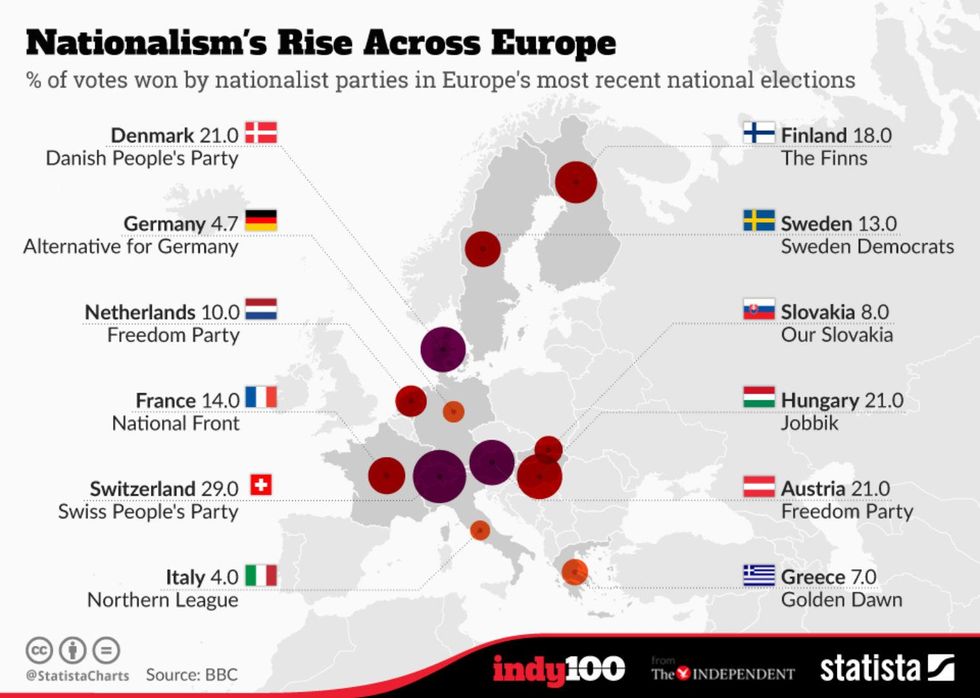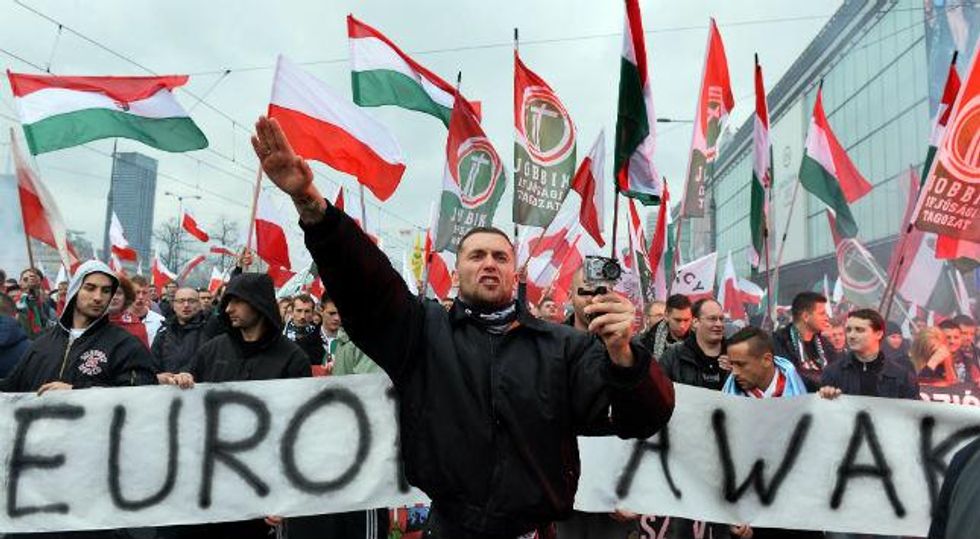News
Narjas Zatat
May 02, 2016
Germany's hardline right-wing political group Alternative fur Deutschland (AfD) adopted an explicitly anti-Muslim policy this week.
Debating on Sunday, Hans-Thomas Tillschneider, an AfD politician said, to deafening applause:
Islam is foreign to us and for that reason it cannot invoke the principle of religious freedom to the same degree as Christianity.
But Germany's far-right fringe is only part of a growing climate of extreme sentiment sweeping across Europe.
The following graph by Statista outlines the countries in which far-right political parties are making waves in parliaments and senates across the continent:
Switzerland, traditionally perceived as the bastion of neutrality, saw the far-right Swiss People's Party win almost a third of votes in the national elections in 2015 - no small feat.
Hungary’s Jobbik is the third strongest party in the country with 21 per cent of parliamentary seats.
Jobbik's rallies are infamous for their Nazi-affliated red-and-white Árpád stripes. The party got into hot water late last year after a camera-woman affiliated with the party was filmed kicking two refugee children.
Picture: Janek Skarzynski, Hungarian nationalist rally, Jobbik (2015)
Nordic countries Denmark, Finland and Sweden are also seeing a more right-wing political make up, with 21, 18 and 13 per cent of their last national election votes respectively going to nationalist parties.
In the UK, one parliamentary seat belongs to the United Kingdom Independence Party - Douglas Carswell of Clacton, who defected from the Conservative Party.
More: Hungarian camerawoman sacked after video shows her kicking and tripping refugees
Top 100
The Conversation (0)















